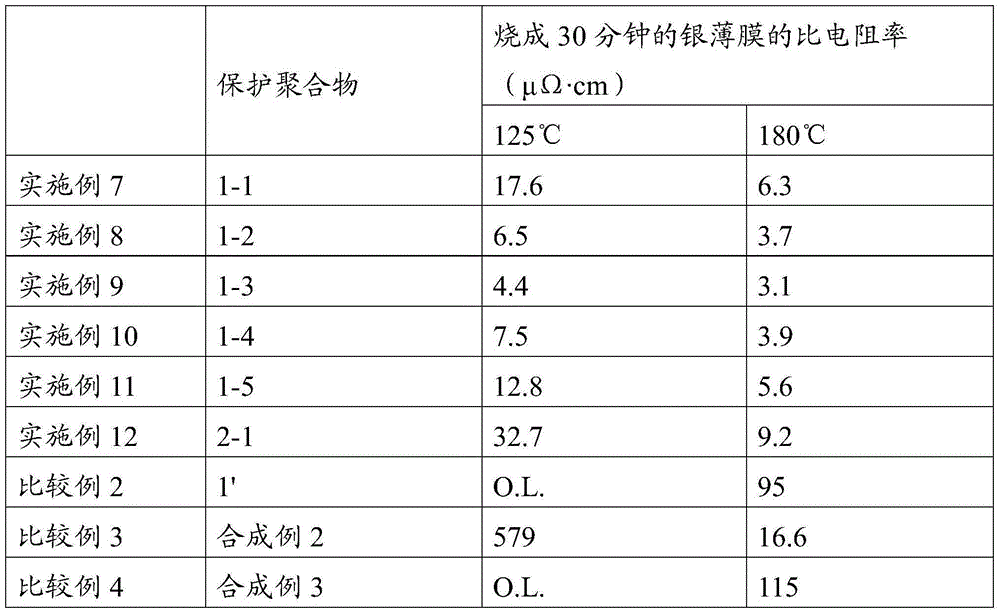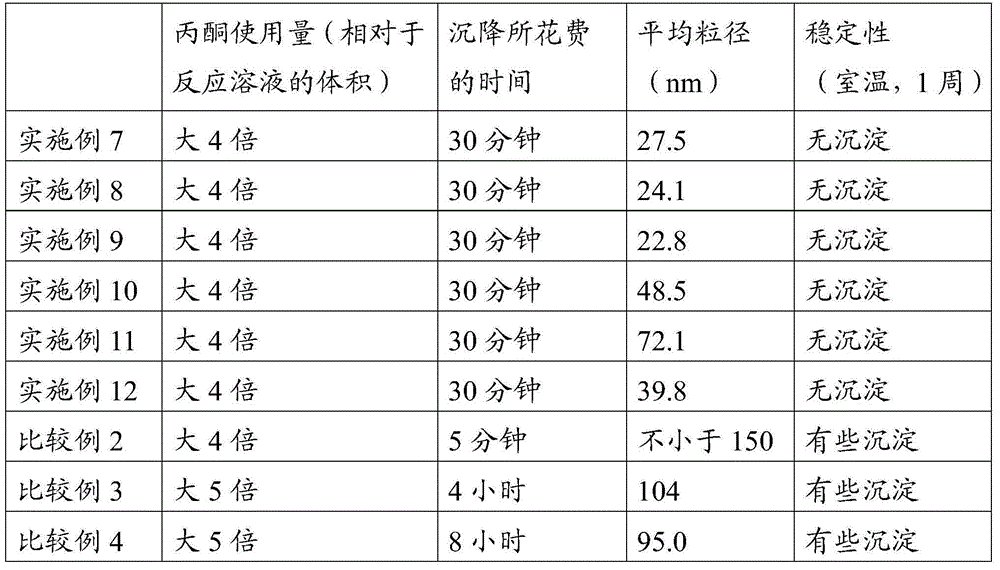Metal nanoparticle-protecting polymer and metal colloidal solution, and method for producing same
A technology of metal nanoparticles and a manufacturing method, which is applied in the field of metal colloid solution and the manufacture of the metal colloid solution, can solve the problem of little ability of dispersant, and achieve the effects of undamaged dispersion stability, high surface energy and small size
- Summary
- Abstract
- Description
- Claims
- Application Information
AI Technical Summary
Problems solved by technology
Method used
Image
Examples
Embodiment
[0067] Now, the present invention will be described in further detail by examples, but these examples do not limit the scope of the present invention. "%" means "% by mass" unless otherwise specified.
[0068] The instruments and measuring methods adopted in the following examples are as follows:
[0069] 1 H-NMR: AL300 manufactured by JEOL Ltd., 300 Hz
[0070] Particle size measurement: FPAR-1000 manufactured by Otsuka Electronics Co., Ltd.
[0071] Plasmon absorption spectrum: UV-3500 manufactured by Hitachi, Ltd.
[0072] pass 1 H-NMR confirms the structure of the protected polymer
[0073] About 3 mL of the protected polymer solution was concentrated and dried thoroughly under reduced pressure. The residue is dissolved in about 0.8mL of NMR measurement solvent (such as deuterated chloroform containing 0.03% tetramethylsilane), the resulting solution is placed in an NMR measurement sample glass tube with an outer diameter of 5mm, and a nuclear magnetic resonance abso...
Synthetic example 1
[0081] [Synthesis Example 1: Synthesis of Tosylated Polyethylene Glycol Monomethyl Ether (PEGM)]
[0082] Under a nitrogen atmosphere, a chloroform solution (30 mL) containing 9.6 g (50.0 mmol) of p-toluenesulfonyl chloride was added dropwise to a solution containing 20.0 g (10.0 mmol) of methoxypolyethylene dichloride under stirring and ice cooling for 30 minutes. Alcohol (Mn=2,000), 8.0g (100.0mmol) pyridine and 20mL chloroform mixed solution. After completion of the dropwise addition, the resulting mixture was further stirred at 40° C. for 4 hours. After the reaction was completed, 50 mL of chloroform was added to dilute the reaction solution. Then, the diluted reaction solution was successively washed with 100 mL of 5% aqueous hydrochloric acid, 100 mL of saturated aqueous sodium bicarbonate and 100 mL of saturated brine, dried over magnesium sulfate, filtered, and concentrated under reduced pressure. The obtained solid was washed several times with hexane, filtered, and...
Synthetic example 2
[0086] [Synthesis Example 2: Synthesis of Polyethyleneimine-b-Polyethylene Glycol Copolymer]
[0087] Under a nitrogen atmosphere, 19.3 g (9.0 mmol) of tosylated polyethylene glycol obtained in Synthesis Example 1 and 30.0 g (3.0 mmol) of branched polyethyleneimine (manufactured by Nippon Catalyst Co., Ltd.) were mixed at 60° C. EPOMIN SP200) was dissolved and mixed by stirring. To the resulting solution was added 0.18 g of potassium carbonate, and the mixture was stirred for 6 hours at a reaction temperature of 120°C. After completion of the reaction, the product was diluted with THF solvent, the residue was removed, and then concentrated under reduced pressure at 30°C. The obtained solid product was redissolved in THF solvent, and heptane was added to the obtained solution, and the residue was again allowed to settle. The residue was isolated by filtration and concentrated under reduced pressure. As a result, 48.1 g of a pale yellow solid product was obtained (yield: 99%)...
PUM
| Property | Measurement | Unit |
|---|---|---|
| particle diameter | aaaaa | aaaaa |
| particle diameter | aaaaa | aaaaa |
Abstract
Description
Claims
Application Information
 Login to View More
Login to View More - R&D
- Intellectual Property
- Life Sciences
- Materials
- Tech Scout
- Unparalleled Data Quality
- Higher Quality Content
- 60% Fewer Hallucinations
Browse by: Latest US Patents, China's latest patents, Technical Efficacy Thesaurus, Application Domain, Technology Topic, Popular Technical Reports.
© 2025 PatSnap. All rights reserved.Legal|Privacy policy|Modern Slavery Act Transparency Statement|Sitemap|About US| Contact US: help@patsnap.com


